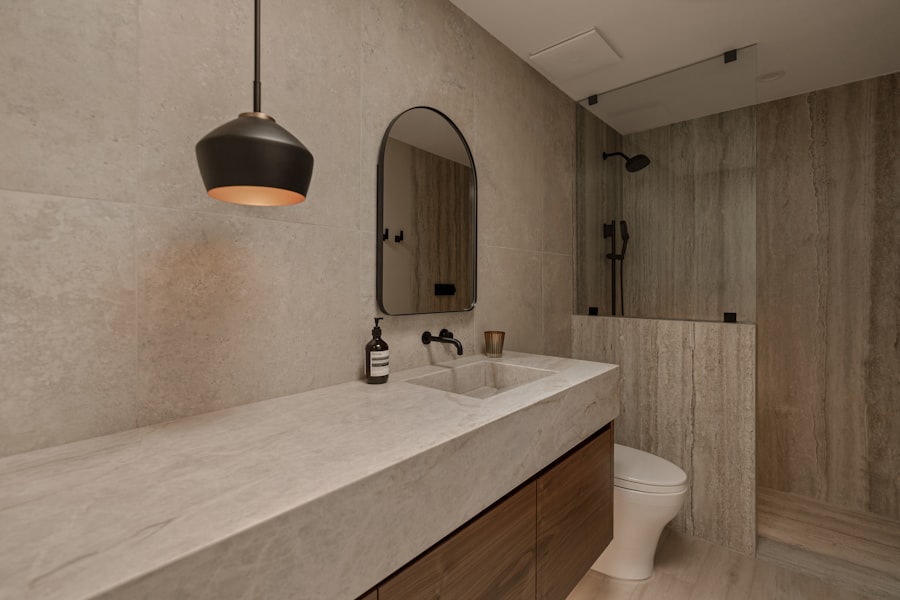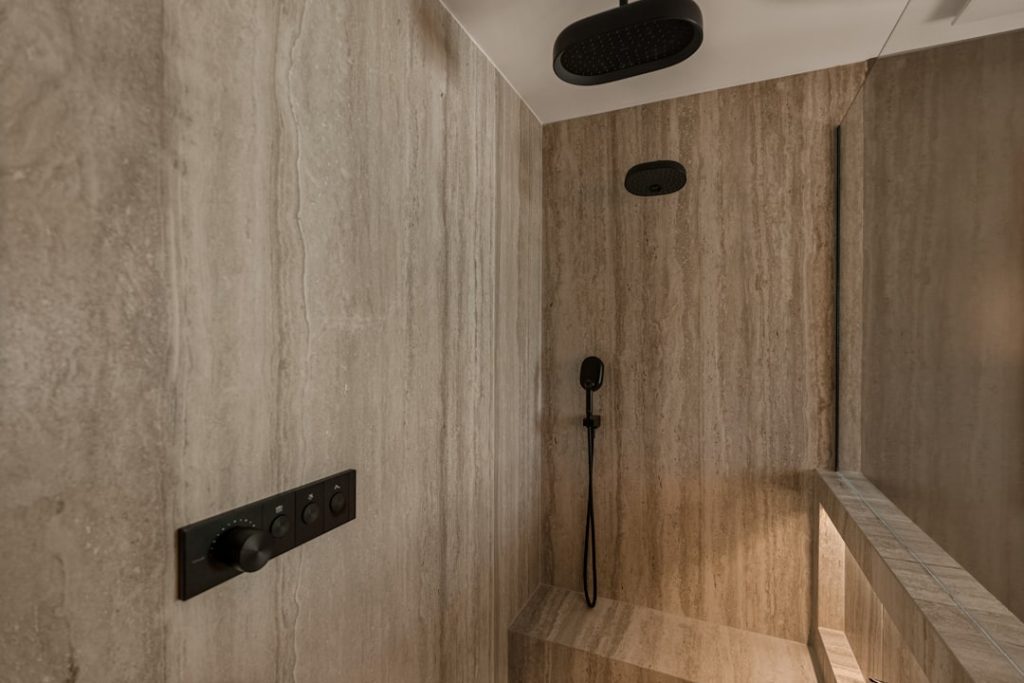Bathroom renovation is often overlooked in the grand scheme of home improvement projects, yet it holds significant importance for both functionality and aesthetics. A well-designed bathroom can enhance the overall value of a home, making it more appealing to potential buyers. According to the National Association of Realtors, a bathroom remodel can yield a return on investment of up to 70%, depending on the extent of the renovation and the local real estate market.
This statistic underscores the financial benefits of investing in a bathroom upgrade, as it not only improves daily living but also serves as a strategic move for homeowners looking to sell. Moreover, the bathroom is one of the most frequently used spaces in any home. It is a sanctuary for personal care and relaxation, and its design can significantly impact one’s daily routine.
An outdated or poorly designed bathroom can lead to frustration and inefficiency, while a thoughtfully renovated space can provide comfort and convenience. Features such as improved lighting, modern fixtures, and optimized layouts can transform a mundane experience into a luxurious retreat. Therefore, understanding the importance of bathroom renovation goes beyond mere aesthetics; it encompasses enhancing quality of life and increasing property value.
Key Takeaways
- Bathroom renovation enhances home value and personal comfort.
- Choosing a reliable local contractor ensures quality and timely work.
- Proper budgeting helps manage costs and avoid overspending.
- Selecting durable materials and fixtures balances style and longevity.
- Incorporating efficient layouts and eco-friendly features maximizes space and sustainability.
Finding the Right Renovation Contractor Near You
Choosing the right contractor for your bathroom renovation is a critical step that can make or break the project. The ideal contractor should not only possess the necessary skills and experience but also align with your vision and budget. Start by seeking recommendations from friends, family, or neighbors who have recently undertaken similar projects.
Online platforms such as Yelp or Angie’s List can also provide valuable insights through customer reviews and ratings. When evaluating potential contractors, it’s essential to check their credentials, including licenses, insurance, and any relevant certifications. Once you have a shortlist of candidates, schedule interviews to discuss your project in detail.
This is an opportunity to gauge their communication style and professionalism. Ask about their previous work, request references, and inquire about their approach to project management. A reputable contractor will be transparent about timelines, costs, and potential challenges.
Additionally, ensure that they are willing to collaborate with you throughout the process, as this partnership is vital for achieving your desired outcome. By taking the time to find the right contractor, you set the foundation for a successful renovation that meets your expectations.
Budgeting for Your Bathroom Renovation

Establishing a realistic budget is one of the most crucial aspects of planning a bathroom renovation. The costs can vary widely based on factors such as size, materials, labor, and design complexity. On average, homeowners can expect to spend anywhere from $5,000 to $15,000 for a mid-range bathroom remodel.
However, high-end renovations can easily exceed $25,000 or more. To create an effective budget, start by determining your priorities—what elements are essential versus what would be nice to have? This will help you allocate funds appropriately.
In addition to direct costs like materials and labor, it’s wise to set aside a contingency fund—typically around 10-20% of your total budget—to cover unexpected expenses that may arise during the renovation process. Hidden issues such as plumbing problems or structural repairs can surface once work begins, so being financially prepared for these surprises is essential. Furthermore, consider the long-term implications of your choices; investing in quality materials may require a higher upfront cost but can save money on repairs and replacements down the line.
Selecting the Right Materials and Fixtures
| Material/Fixture | Durability | Maintenance | Cost Efficiency | Environmental Impact | Best Use Case |
|---|---|---|---|---|---|
| Stainless Steel | High | Low | Moderate | Recyclable | Kitchen Fixtures, Outdoor Use |
| Porcelain | High | Low | Moderate | Low Impact | Bathroom Tiles, Sinks |
| Brass | Moderate | Moderate | Moderate | Recyclable | Faucets, Decorative Fixtures |
| Plastic (PVC) | Low | Low | High | High Impact | Pipework, Budget Fixtures |
| Wood | Moderate | High | Variable | Renewable | Cabinetry, Decorative Elements |
| LED Lighting Fixtures | High | Low | High | Low Energy Use | General Lighting, Energy Saving |
The selection of materials and fixtures plays a pivotal role in defining the look and functionality of your renovated bathroom. When choosing materials, consider factors such as durability, maintenance requirements, and aesthetic appeal. For instance, porcelain tiles are popular for flooring due to their resilience and water resistance, while natural stone offers a luxurious appearance but may require more upkeep.
Additionally, think about how different materials will work together; a cohesive design will create a harmonious space. Fixtures are equally important in shaping the bathroom experience. From faucets to showerheads, selecting high-quality fixtures can enhance both functionality and style.
Look for options that offer water-saving features without compromising performance; this not only benefits the environment but can also reduce utility bills over time. Moreover, consider the finish of your fixtures—brushed nickel, chrome, or matte black can all convey different aesthetics and should complement your overall design theme. By carefully selecting materials and fixtures that align with your vision and practical needs, you can create a bathroom that is both beautiful and functional.
Maximizing Space and Functionality in Your Bathroom
In many homes, bathrooms are often limited in space, making it essential to maximize every square foot during renovation. One effective strategy is to consider layout changes that improve flow and accessibility. For example, if your bathroom has an awkwardly placed toilet or shower, repositioning these elements can create a more open feel.
Additionally, incorporating built-in storage solutions such as recessed shelves or cabinetry can help keep surfaces clutter-free while providing ample space for toiletries and towels. Another way to enhance functionality is by integrating smart technology into your bathroom design. Smart mirrors with built-in lighting and defogging features can elevate your grooming routine, while programmable thermostats for heated floors add an element of luxury.
Furthermore, consider installing multi-functional fixtures like shower-tub combos or vanities with integrated sinks to optimize space usage. By focusing on both layout and innovative solutions, you can transform a cramped bathroom into an efficient oasis that meets all your needs.
Incorporating Trendy and Timeless Design Elements

When renovating a bathroom, striking a balance between trendy and timeless design elements is crucial for creating a space that remains appealing over time. Trends come and go; however, certain design principles endure through changing fashions. For instance, while bold colors or unique tile patterns may be trendy today, opting for neutral tones as a base allows for easier updates in the future through accessories like towels or artwork.
Incorporating classic elements such as subway tiles or clawfoot tubs can provide a sense of timelessness while still allowing room for modern touches like sleek vanities or contemporary lighting fixtures. Mixing styles—such as pairing vintage-inspired faucets with minimalist cabinetry—can create an eclectic yet cohesive look that reflects personal taste without becoming dated quickly. By thoughtfully blending trendy features with enduring designs, you can achieve a bathroom that feels fresh yet remains relevant for years to come.
Enhancing Energy Efficiency and Sustainability
As environmental concerns continue to grow, many homeowners are prioritizing energy efficiency and sustainability in their renovation projects. The bathroom offers numerous opportunities to implement eco-friendly practices that reduce water consumption and energy usage. For instance, installing low-flow toilets and faucets can significantly decrease water waste without sacrificing performance.
According to the Environmental Protection Agency (EPA), replacing older toilets with high-efficiency models can save an average of 13,000 gallons of water per year per household. In addition to water-saving fixtures, consider using sustainable materials such as bamboo flooring or recycled glass tiles. These options not only minimize environmental impact but also add unique character to your space.
Furthermore, energy-efficient lighting solutions like LED bulbs can reduce electricity consumption while providing ample illumination for daily tasks. By prioritizing sustainability in your bathroom renovation, you contribute positively to the environment while enjoying long-term savings on utility bills.
Maintaining and Caring for Your Newly Renovated Bathroom
Once your bathroom renovation is complete, maintaining its beauty and functionality requires ongoing care and attention. Regular cleaning is essential to prevent mold growth and maintain surfaces; using non-abrasive cleaners will help preserve finishes without causing damage. Pay special attention to grout lines between tiles; sealing them periodically can prevent staining and prolong their lifespan.
Additionally, keep an eye on plumbing fixtures for any signs of leaks or wear over time. Addressing minor issues promptly can prevent more significant problems down the line. Establishing a routine maintenance schedule—such as checking caulking around sinks and tubs every few months—can help ensure that your newly renovated bathroom remains in top condition for years to come.
By committing to regular upkeep, you protect your investment while enjoying the comfort and beauty of your revitalized space.




